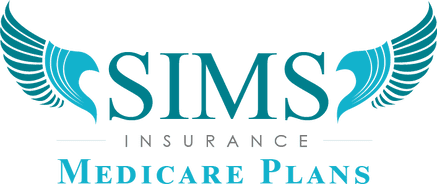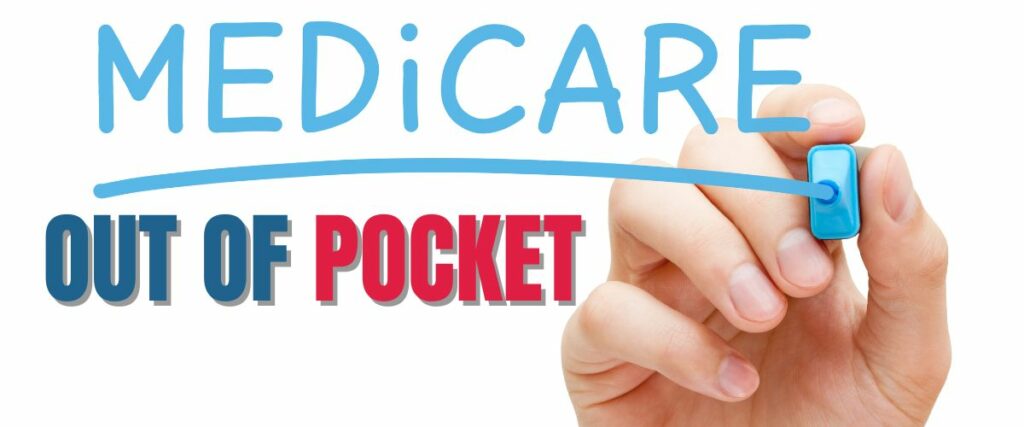What is the Out of Pocket Maximum for Medicare in 2023
If you are enrolled in Medicare or planning to enroll soon, you may be wondering how much you will have to pay for your health care services in the . Medicare is a federal health insurance program that covers people who are aged 65 or older, disabled, or have certain health conditions. Medicare has four parts: Part A, Part B, Part C, and Part D.
Part A covers inpatient hospital care, skilled nursing facility care, hospice care, and some home health care. Part B covers outpatient medical care, such as doctor visits, lab tests, preventive services, and durable medical equipment. Part C, also known as Medicare Advantage, is an alternative way to get your Medicare benefits through a private plan that may offer extra benefits and lower costs. Part D covers prescription drugs.
Each part of Medicare has different costs and benefits that can affect your out-of-pocket expenses. Out-of-pocket expenses are the amount of money that you pay for your health care services that are not covered by Medicare or other insurance. These include deductibles, coinsurance, copayments, and premiums.
A deductible is the amount of money that you have to pay before Medicare or your plan starts to pay. A coinsurance is the percentage of the cost that you have to pay after you meet your deductible. A copayment is a fixed amount of money that you have to pay for a specific service or item. A premium is the amount of money that you have to pay monthly or annually to be enrolled in Medicare or a plan.
To help you understand how much you will have to pay for your 2023 Medicare costs, we will explain the out-of-pocket maximum for each part of Medicare and how it can affect your budget and peace of mind.
What is the Out-of-Pocket Maximum for Original Medicare (Parts A and B) in the year 2023?
Original Medicare is the traditional way to get your Medicare benefits through the federal government. It consists of Part A and Medicare Part B. Most people do not have to pay a premium for Part A, but they have to pay a deductible and coinsurance for each benefit period. A benefit period begins when you are admitted to a hospital or skilled nursing facility and ends when you have been out for 60 consecutive days. In the year 2023, the Part A deductible is $1,556 per benefit period. The coinsurance is $0 for the first 60 days, $389 per day for days 61-90, and $778 per day for days 91 and beyond (up to 60 lifetime reserve days).
Part B covers 80% of the approved amount for most outpatient services after you meet your annual deductible. In the year 2023, the Part B deductible is $226. The Part B premium varies depending on your income and whether you are enrolled in Social Security or not. The standard Part B premium is $164.90 per month in the year 2023. However, if your income is above a certain threshold, you may have to pay more for Part B through an income-related monthly adjustment amount (IRMAA). The IRMAA ranges from $59.40 to $356.40 per month in the year 2023.
The problem with Original Medicare is that it does not have an out-of-pocket maximum. This means that there is no limit on how much you Medicare beneficiaries spend maximum out-of-pocket for your Medicare costs in the year 2023 or any other year. You will have to pay 20% of the cost for most Part B services and items, which can add up quickly if you have a serious or chronic health condition. You will also have to pay for some services and items that are not covered by Medicare at all, such as dental care, vision care, hearing aids, and long-term care.
To protect yourself from high out-of-pocket costs with Original Medicare, you have two options: enroll in a Medicare Supplement Plan or a Medicare Advantage Plan.
What is the Out-of-Pocket Maximum for Medicare Supplement (Medigap) Plans in the year 2023?
Medicare Supplement Plans, also known as Medigap Plans, are offered by private insurance companies that work with Medicare. They help pay some or all of the costs that Original Medicare does not cover, such as deductibles, coinsurance, and copayments. They also offer some benefits that Original Medicare does not, such as foreign travel emergency coverage.
Medicare Supplement Plans have different costs and benefits depending on the plan you choose and where you live. You will have to pay a monthly premium for your plan, which may range from around $50 to over $300. You will also have to pay the Part B premium and any IRMAA that applies to you.
However, Medicare Supplement Plans do not have an out-of-pocket maximum like Medicare Advantage Plans do. Instead, some Medicare Supplement Plans offer an out-of-pocket limit, which is similar but not exactly the same as an out-of-pocket maximum.
An out-of-pocket limit is the amount that you pay before your plan pays 100%
of your Part A and Part B costs for the rest of the year. However, this does not include your Part B premium or any Part D Plan costs. Also, some Medicare Supplement Plans may only cover a percentage of your costs until you reach the out-of-pocket limit.
Only two Medicare Supplement Plans offer an out-of-pocket limit: Plan K and Plan L. In the year 2023, the out-of-pocket limit for Plan K is $6,940 and for Plan L is $3,470. These limits are based on estimates of the United States Per Capita Costs (USPCC) of the Medicare program developed by CMS.
If you choose a Medicare Supplement Plan that does not have an out-of-pocket limit, you will have to pay for any costs that exceed the coverage of your plan. For example, if you have Plan F, which covers 100% of your Part A and Part B coverage deductibles, coinsurance, and copayments, you will still have to pay for your Part B premium, any IRMAA, and any Part D prescription drug costs.
To compare different Medicare Supplement Plans and find the best one for you, you can use tools or centers for Medicare like [Medicare.gov] or [eHealth]. These tools can help you search for plans based on your zip code, age, gender, and health status. You can also see the costs, benefits, ratings, and reviews of each plan.
You can also talk to a licensed broker or agent that meets NCOA’s Standards of Excellence. They can provide unbiased and trusted advice on choosing the right Medicare Supplement Plan for you. They can also help you enroll in a plan and answer any questions you may have.
What is the Out-of-Pocket Maximum for Medicare Advantage (Part C) Plans in the year 2023?
Medicare Advantage Plans are offered by private insurance companies that contract with Medicare. They provide all the benefits of Original Medicare, plus some extra services like dental, vision, hearing, and prescription drug coverage. Some plans may also offer wellness programs, fitness memberships, telehealth, and other perks.
Medicare Advantage Plans have different costs and benefits depending on the plan you choose and where you live. You will have to pay a monthly premium for your plan, which may vary from $0 to over $200. You will also have to pay a deductible, copayments, and coinsurance for the services you use.
However, Medicare Advantage Plans have an out-of-pocket maximum that limits how much you have to pay in a year. In the year 2023, the out-of-pocket maximum for Medicare Advantage Plans is $8,300 for in-network services and $12,450 for in-network and out-of-network services combined. However, individual plans can set lower limits if they wish. Part D cost sharing does not apply towards your Medicare Advantage Plan’s out-of-pocket maximum.
Once you reach your plan’s out-of-pocket maximum, your plan will cover 100% of your approved Medicare costs for the rest of the year. This can help you budget your health care expenses and avoid surprise bills.
To compare different Medicare Advantage Plans and find the best one for you, you can use tools like [Medicare Plan Finder] or [eHealth]. These tools can help you search for plans based on your zip code, medications, doctors, and other criteria. You can also see the costs, benefits, ratings, and reviews of each plan.
You can also talk to a licensed broker or agent that meets NCOA’s Standards of Excellence. They can provide unbiased and trusted advice on choosing the right Medicare Advantage Plan for you. They can also help you enroll in a plan and answer any questions you may have.
How to Choose the Best Medicare Plan for Your Needs
As you can see, there are different options for reducing your out-of-pocket costs with Medicare. The best plan for you depends on several factors, such as:
- Your health status and needs
- Your budget and income
- Your preferences and lifestyle
- Your location and availability of providers
To help you make an informed decision about your Medicare coverage in 2023, here are some tips:
- Compare different plans using online tools or talking to a broker or agent
- Review your current plan’s costs and benefits for 2023
- Check if your doctors, hospitals, pharmacies, and medications are in your plan’s network
- Consider enrolling in a plan that offers extra benefits or lower costs
- Enroll or change your plan during the open enrollment period from October 15 to December 7
We’re Here to Help
You do not have to spend hours reading articles on the internet to get answers to your Medicare questions. Give Scott Sims at Sims Insurance Medicare Plans a Call at (541) 915-0939. You will get the answers you seek in a matter of minutes, with no pressure and no sales pitch. We are truly here to help.
Frequently Asked Questions
What is the standard 2023 Medicare Part B premium?
The standard Medicare Part B premium amount for 2023 is $164.90 per month.
What is the Medicare Part B deductible 2023?
The Medicare Part B deductible is $226 in 2023.
What is the maximum out-of-pocket limit for Medicare Advantage enrollees in 2023?
The maximum out-of-pocket limit for Medicare Advantage Plans is $8,300 in 2023.
Do Medicare Advantage Plans have premiums?
Yes, most Medicare Advantage Plans charge a monthly premium in addition to the Medicare Part A and Part B premium.
What does Medicare Part D prescription drug coverage include?
Medicare Part D income-related monthly adjustments premiums, deductibles, and copays or coinsurance once the deductible is met.
What is the basic Medicare Part D deductible for 2023?
The Medicare Part D deductible is $505 in 2023.
What types of costs are included in Medicare’s out-of-pocket expenses?
Medicare’s out-of-pocket expenses include deductibles, copays, and coinsurance for Part A and Part B covered services.
Who is eligible to enroll in Medicare?
People age 65 and older, and some people younger than 65 with disabilities or certain conditions are eligible for Medicare.
What does Medicare Part A cover?
Medicare Part A covers inpatient hospital stays, skilled nursing facility care, some home health care, and hospice care. People with Medicare Part A may or may not pay out-of-pocket Medicare costs.
How can I learn more about Medicare coverage options?
You can visit www.Medicare.gov or speak to a Medicare counselor to learn about Original Medicare, Medicare Advantage Plans, Part D drug plans, and Medicare Supplement Insurance.


